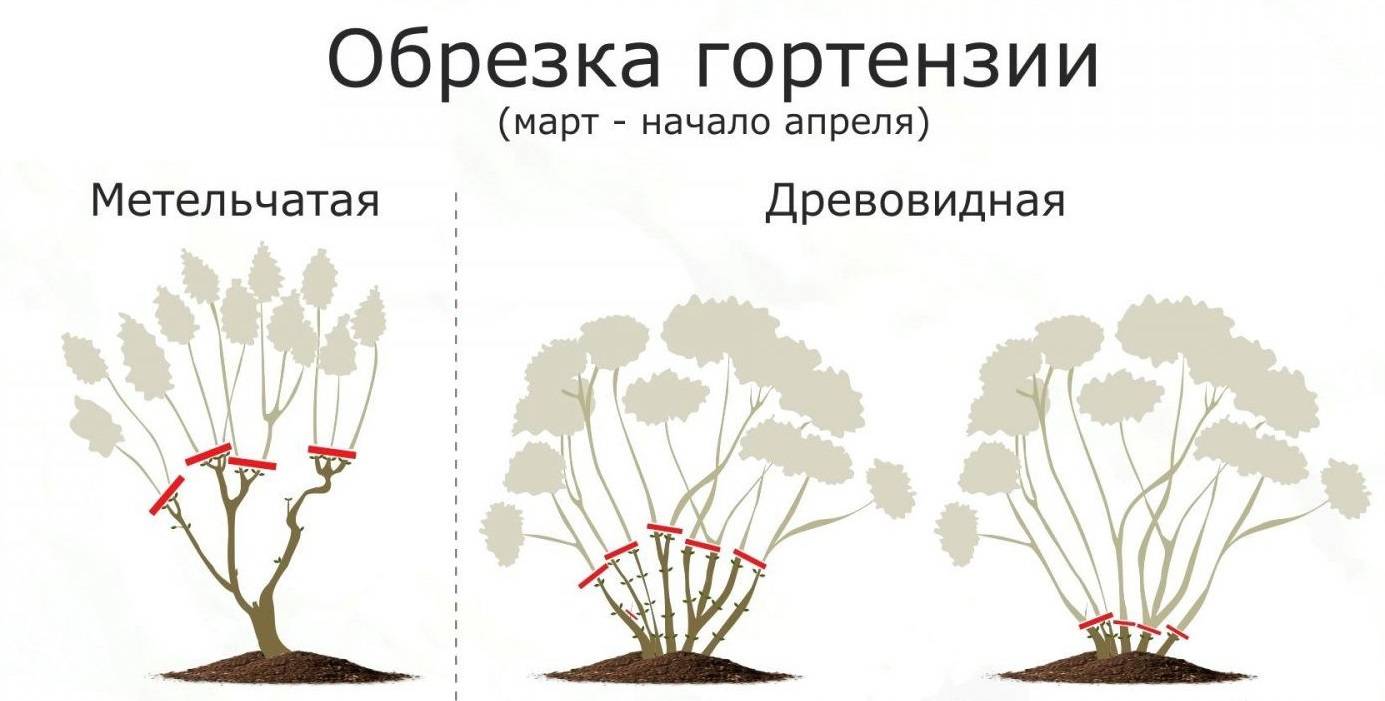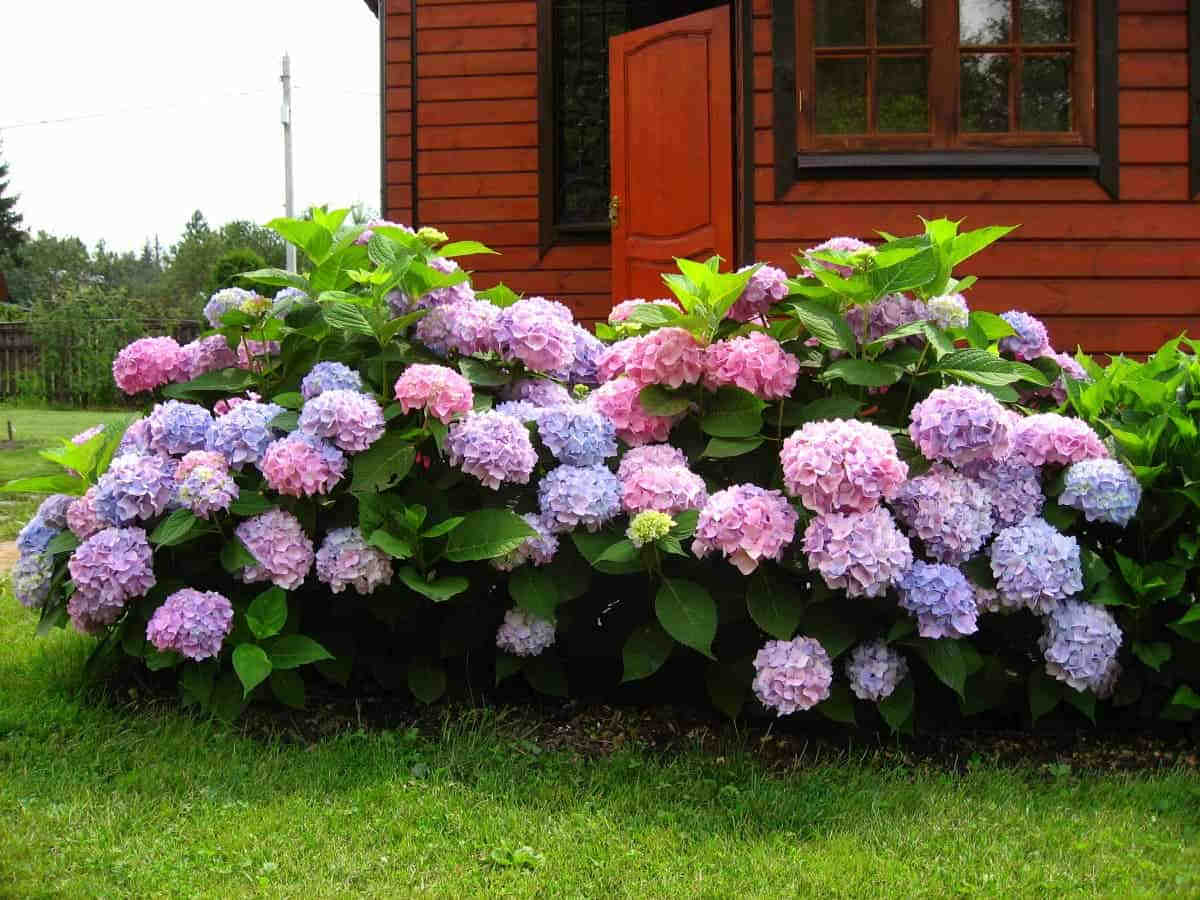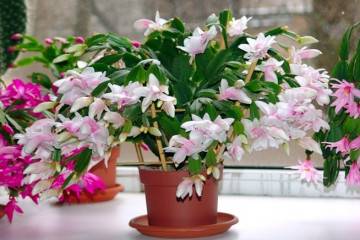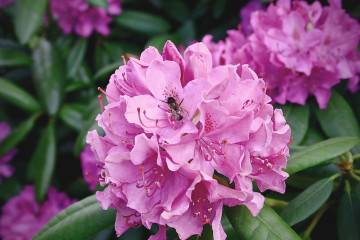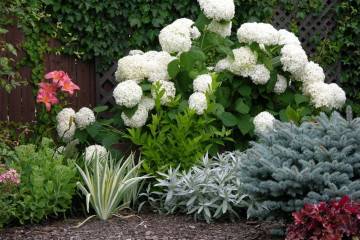Why the hydrangea paniculata, tree-like, large-leaved does not grow
Content:
Hydrangea is the most popular flower in gardens. It pleases with flowering from spring to late autumn. But sometimes problems arise with it, so it is important to know why hydrangea does not grow.
Why the hydrangea paniculata, tree-like, large-leaved does not grow
Hydrangea flowers can change color depending on the acidity of the soil in which they grow. If it is neutral, then the inflorescences will be cream or beige, in alkaline soil - pink and lilac. If the soil contains a large amount of aluminum, the flowers take on a blue tint. But why is the hydrangea growing slowly or not blooming at all?
The growth of the bush is influenced by many factors. Often, growth slows down after winter, so it is worth waiting a little for the onset of a warmer period. If even in this case there was no progress, then it is recommended to think about possible problems that prevent the active growth of the plant.
Poor root system condition
First of all, you should think about the state of the root system. It can often be damaged by pests, infectious diseases and frost. If we are talking about a flower in a pot, then it is recommended to pull it out with a lump of earth and remove the damaged areas by rinsing the remaining roots with water with a solution of potassium permanganate or a special agent. You will also need to completely change the soil.
If the plant is in open ground, then it is imperative to examine the condition of its roots. To do this, carefully remove the top earthen layer to check the root system. If there is no visible damage, then sprinkle it with nutritious soil again and feed it. Otherwise, it is worth completely digging out the bush and replanting it to another place.
Failure to comply with the rules of pruning
Pruning is required for any type of hydrangea, as this procedure stimulates the branching of the bush. But it should be borne in mind that depending on the type, pruning options change. Treelike, large-leaved, oakleaf and serrated hydrangeas require minimal intervention. Pruning drastically will inhibit growth and delay flowering, so it is advisable to consider the type of plant.
Diseases
Diseases can be the cause of slowed growth. You can define them by their external features:
- gray rot. The disease is characterized by tissue damage that becomes watery. Fungus appears after prolonged rains. It is required to remove the infected areas completely and burn. After that, the plant should be treated with a foundation;
- powdery mildew. The disease manifests itself with yellow and green spots, as well as gray bloom. The bush begins to fade slowly, so it should be treated with fungicidal preparations. It is worth choosing fast or topaz;
- ring spot. The disease affects the bush in a short period of time. The shrub should be removed from the ground along with the ground and destroyed so that the virus does not transfer to other plants;
- septoria.The disease is characterized by brown spots on the leaves. The plant needs to be treated with a solution of copper sulfate;
- peronosporosis appears at high humidity and heat. Indicates its presence with greasy spots on the leaves, which begin to darken over time. It is required to process the bush with a solution of laundry soap with copper sulfate;
- chlorosis is characterized by metabolic disorders in plants. Because of this, the leaves begin to brighten, the buds are formed smaller, and quickly die. It is required to treat hydrangea with ferovite, antichlorosis.
The reasons for the lack of flowering in some species and varieties
In order for a hydrangea to grow healthy and bloom, you do not need to know a lot of information. You can make your garden more beautiful if you follow certain simple rules.
Adaptation after disembarkation
The plant may stunt growth due to problems with root acclimatization. This is a common problem with large-leaved hydrangeas that are transplanted outdoors. Ordinary commercial fertilizer can contain a large amount of dressings, which is why the root system of the plant develops poorly.
If the hydrangea grows poorly, what to do, how not to start feeding the plant again? Also, do not cut and soak the roots during transplantation. It is recommended not to shake off the substrate containing useful components. Hydrangea spends a lot of energy on flowering, so the roots remain weak at first. It is also worth applying fertilizer for the first months, gradually reducing its amount.
Unsuccessful seedling planting site
When planting a hydrangea, you need to carefully choose a permanent place where it will grow. They plant it in loose and fertile soil. In this case, the place should be well protected from winds and direct sunlight. If there is no shading, the growth of the plant slows down, and the flowers become small and pale.
Frostbite of the kidneys in winter
Garden hydrangea does not tolerate frost. A drop in air temperature below 0 ° C leads to the fact that flower buds freeze. After that, the hydrangea does not bloom in the spring. It is required to carefully approach the protection of bushes from frost.
In the fall, until the cold comes, it is required to cut off all the leaves, pull off the branches with a tourniquet and wrap them with covering material. It is worth bending the branches to the ground and covering them with spruce branches. Only with the onset of warmth and the departure of night frosts can one begin to free the plant from spruce branches and open it.
Treelike and panicle hydrangea can withstand frost, since they are frost-resistant species. Paniculata should not be covered at all for the winter, since the inflorescences appear on young shoots that have grown in the new season. However, even this species may not bloom, here you should look for another reason why the panicle hydrangea does not grow.
The large-leaved hydrangea variety should be selected with great care, since many of them die due to frostbite of the buds and shoots. There are species that are winter-hardy, but even they will not be able to winter without shelter.
Soil and fertilizing
Paniculata hydrangea can experience flowering problems if planted in the wrong soil. The plant requires a loamy soil of weak acidity. Sandy soil is too light and therefore not suitable for this species. At the same time, the bush often lacks nutrition, so special attention should be paid to feeding.
Treelike hydrangea also needs proper feeding, so if it is not produced, then flowering will also be delayed for a long time. Also, this species should be sheltered for the winter, although it is considered frost-resistant.
Top dressing at different times of the year differs from each other in composition. In the spring, hydrangeas need to increase the leaf mass, so it is worth purchasing nitrogen fertilizer. For these purposes, urea and potassium sulfate are often mixed.
At the end of spring, it is time to lay the buds. During this period, it is worth feeding the hydrangea with phosphorus-potassium fertilizers. The best results are obtained with superphosphate, but you can use other dressings that have a mineral composition.
In the summer, top dressing is required twice to acidify the soil. This is done with milk whey or citric acid. The operation is required during the active flowering of the plant. In the fall, it is required to prepare the bushes for frost, so phosphorus and potassium should be added to the ground.
Lack or excess of moisture
Problems with flowering tree hydrangea can appear due to improper watering. If the bush is in dry soil, then it will develop more slowly and stop blooming.
Problems with the growth and flowering of hydrangeas do not always depend on the gardener's mistakes. For example, diseases may occur that could not be prevented. But proper care and symptoms noticed in time will help preserve the plant.


